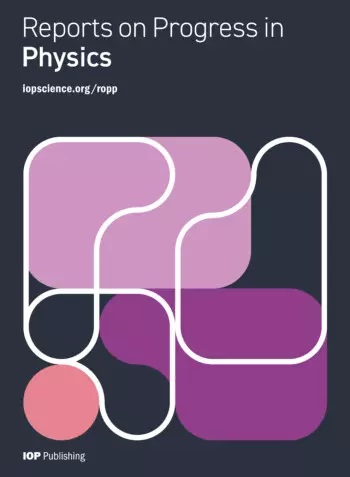聚合物的玻璃化转变在整体,受限几何,和近界面
IF 20.7
1区 物理与天体物理
Q1 PHYSICS, MULTIDISCIPLINARY
引用次数: 278
摘要
当冷却或加压时,聚合物熔体表现出分子迁移率的极大降低。如果该过程以恒定速率进行,则液体的结构松弛时间最终超过允许的平衡时间。这使系统失去平衡,液体在操作上被定义为玻璃——一种缺乏长程有序的固体。尽管对(液体/玻璃)转变的研究已经进行了近100年,但目前尚不清楚是哪种分子机制导致了分子动力学的独特减速。在这篇综述中,我们首先向读者介绍了玻璃聚合物动力学和玻璃化的实验方法、理论和模拟。然后,我们分析了连通性、结构和链环境对几个单体长度尺度下分子运动的影响,以及大分子结构如何影响非线性聚合物的玻璃化转变。然后,我们讨论了一个修正的纳米约束图,超越了基于界面相互作用和表面/体积比的简单图。相反,对大量实验证据、分子模拟结果和理论预测的分析支持了一个更复杂的框架,其中其他参数是相关的。我们重点讨论了局部顺序、自由体积、不可逆链吸附、受限和受限介质的Debye-Waller因子、链刚度和玻璃化温度的绝对值。我们最后强调了弛豫时间和玻璃化转变温度分布的分子起源,这些分布远远超过了链的大小。快速弛豫模式,几乎普遍存在于聚合物和空气之间的自由表面,也被评论。这些模式的弛豫速率远远大于体玻璃动力学的特性。我们推测这些可能是在受限或非均相聚合物体系中发生的独特弛豫过程的标志。本文章由计算机程序翻译,如有差异,请以英文原文为准。
Glass transition of polymers in bulk, confined geometries, and near interfaces
When cooled or pressurized, polymer melts exhibit a tremendous reduction in molecular mobility. If the process is performed at a constant rate, the structural relaxation time of the liquid eventually exceeds the time allowed for equilibration. This brings the system out of equilibrium, and the liquid is operationally defined as a glass—a solid lacking long-range order. Despite almost 100 years of research on the (liquid/)glass transition, it is not yet clear which molecular mechanisms are responsible for the unique slow-down in molecular dynamics. In this review, we first introduce the reader to experimental methodologies, theories, and simulations of glassy polymer dynamics and vitrification. We then analyse the impact of connectivity, structure, and chain environment on molecular motion at the length scale of a few monomers, as well as how macromolecular architecture affects the glass transition of non-linear polymers. We then discuss a revised picture of nanoconfinement, going beyond a simple picture based on interfacial interactions and surface/volume ratio. Analysis of a large body of experimental evidence, results from molecular simulations, and predictions from theory supports, instead, a more complex framework where other parameters are relevant. We focus discussion specifically on local order, free volume, irreversible chain adsorption, the Debye–Waller factor of confined and confining media, chain rigidity, and the absolute value of the vitrification temperature. We end by highlighting the molecular origin of distributions in relaxation times and glass transition temperatures which exceed, by far, the size of a chain. Fast relaxation modes, almost universally present at the free surface between polymer and air, are also remarked upon. These modes relax at rates far larger than those characteristic of glassy dynamics in bulk. We speculate on how these may be a signature of unique relaxation processes occurring in confined or heterogeneous polymeric systems.
求助全文
通过发布文献求助,成功后即可免费获取论文全文。
去求助
来源期刊

Reports on Progress in Physics
物理-物理:综合
CiteScore
31.90
自引率
0.00%
发文量
45
审稿时长
6-12 weeks
期刊介绍:
Reports on Progress in Physics is a highly selective journal with a mission to publish ground-breaking new research and authoritative invited reviews of the highest quality and significance across all areas of physics and related areas. Articles must be essential reading for specialists, and likely to be of broader multidisciplinary interest with the expectation for long-term scientific impact and influence on the current state and/or future direction of a field.
 求助内容:
求助内容: 应助结果提醒方式:
应助结果提醒方式:


